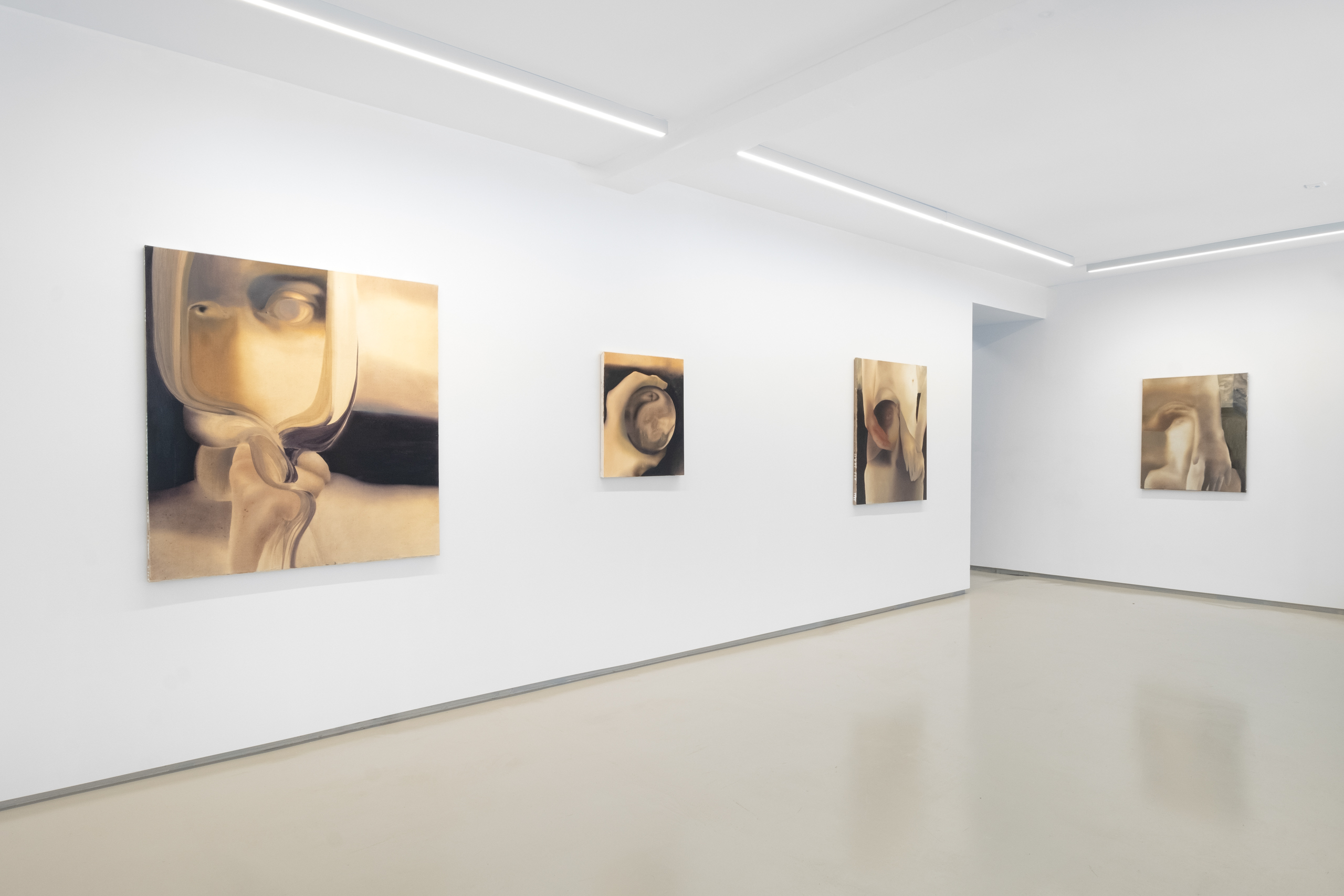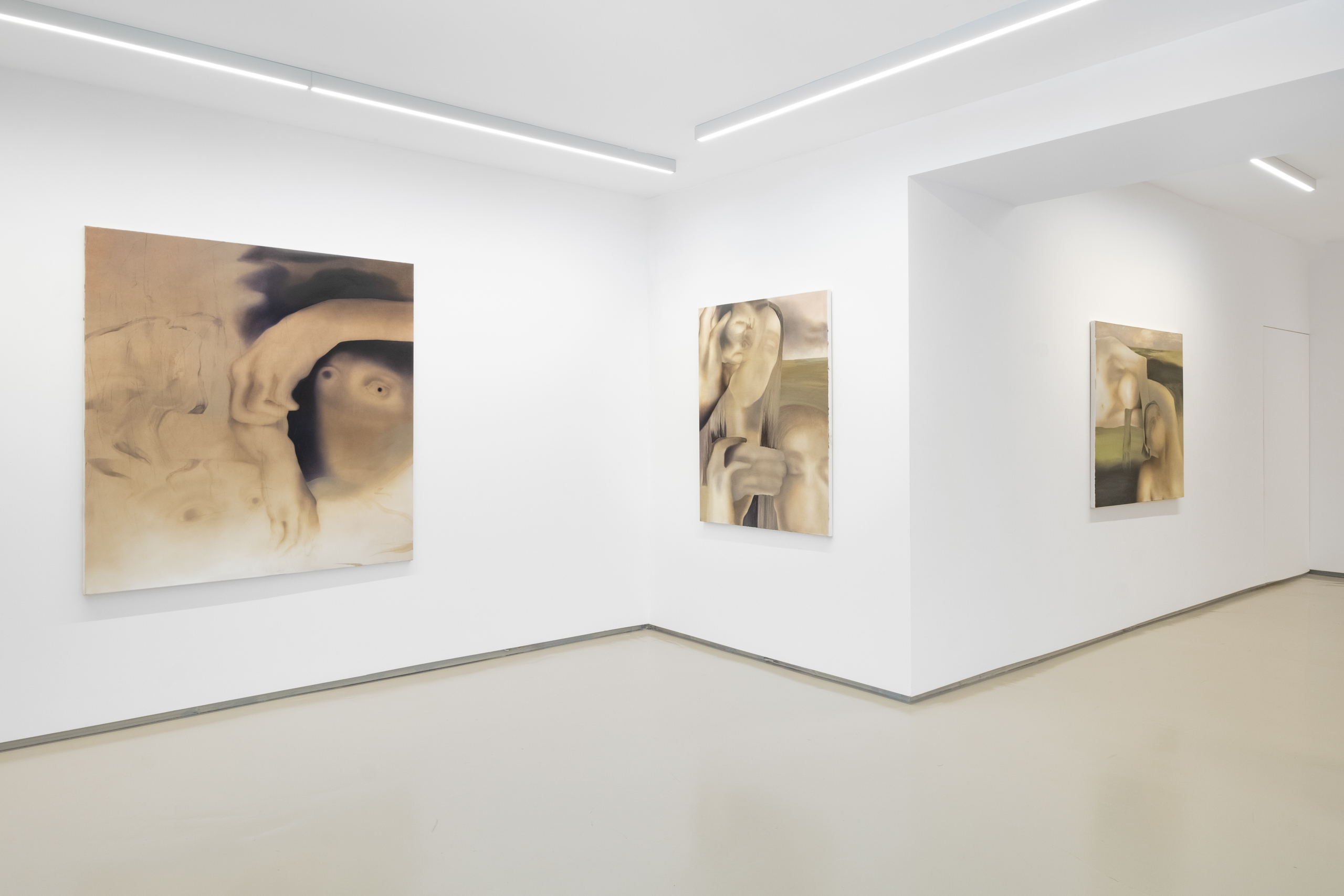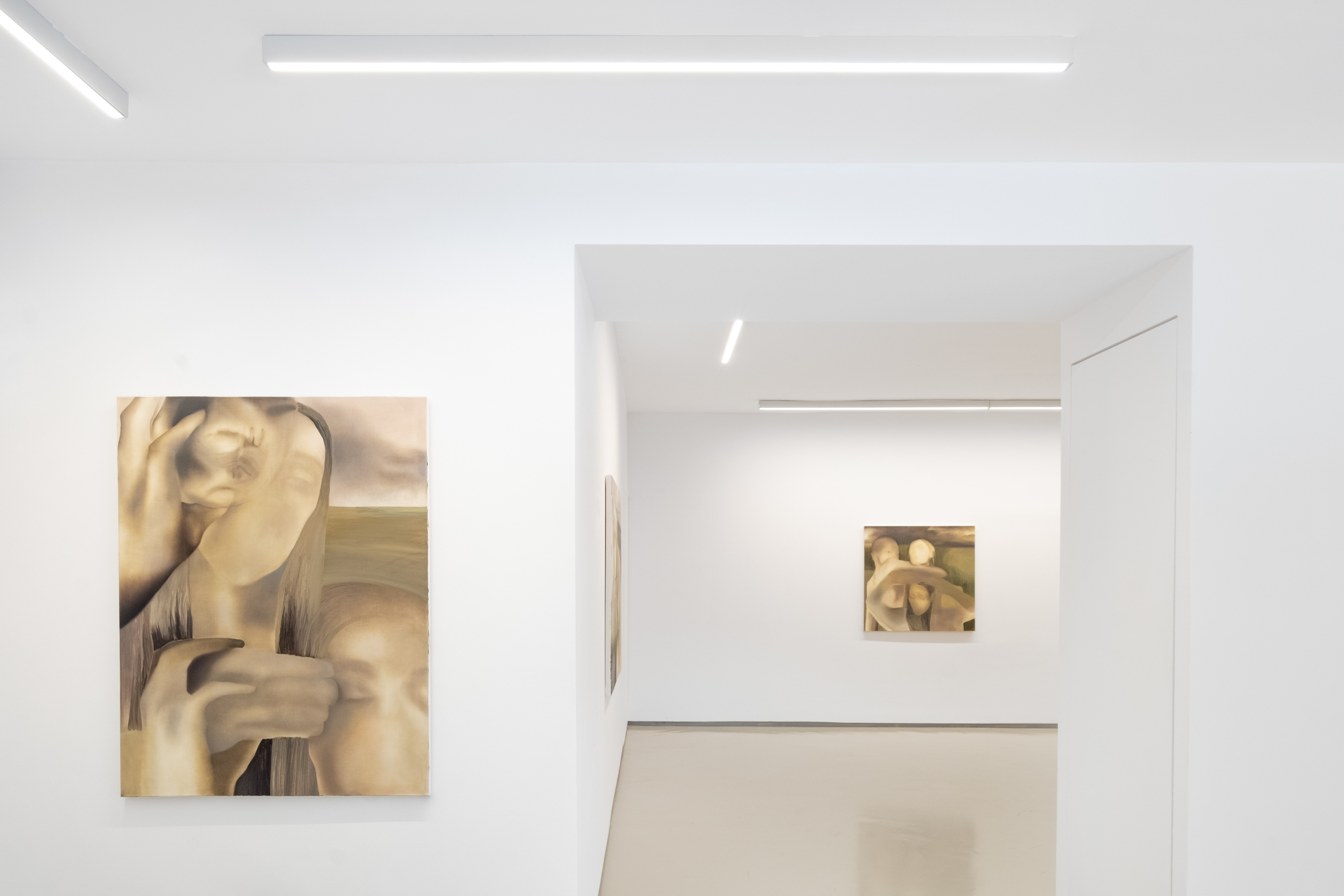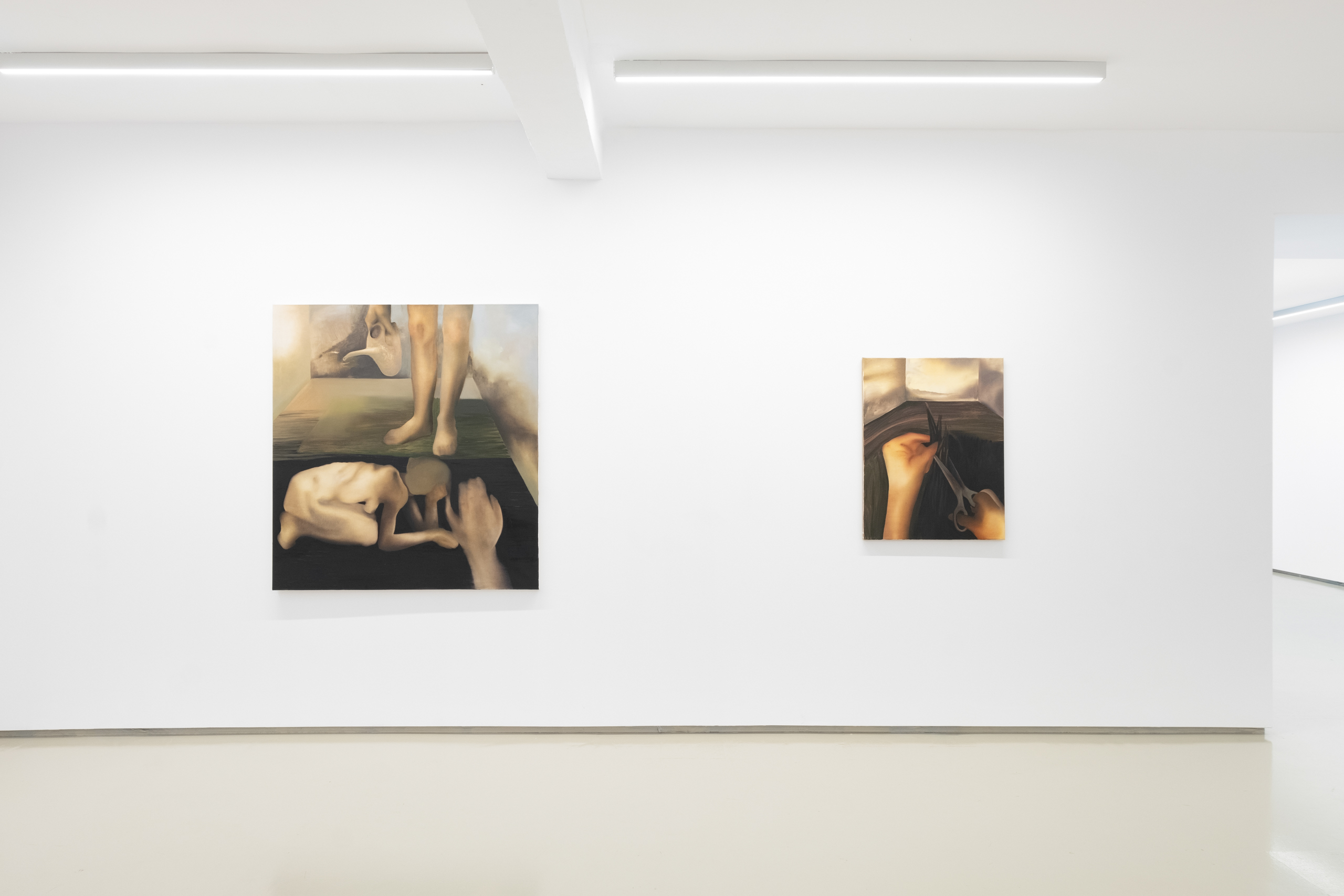Martyna Pinkowska
Golden
May 19 – July 22, 2023
“Golden Girl” is a self-portrait of Martyna Pinkowska, from which the exhibition borrows its title. The framing device of her narrative is the title figure – a capable, successful person on whom high expectations, a mix of both ambition and requirement, are imposed. The figure of the Golden Girl becomes a binder that connects anonymous heroines. The character portrayed in the painting has her back turned to us. Apart from the sketch of a silhouette and a suggestion of blush, not much is known about her. The blush on her face could be interpreted as a sign of her embarrassment, or perhaps even shame. The pink colour is its manifestation within the body. The body, as a space saturated with emotions, conveys them further, so in the form of affections they leave the frames of the painting. The emotional marks on the painted body seem familiar. We try to decipher them, attempting interpretation from this very point.
The inconspicuous painting, easy to overlook, opens up a space where – besides us, the viewers – there are a number of virtually indescribable figures. They lack distinct features, gestures, and their gazes are blank. They almost seem to have settled into the canvases since the moment of the artist’s first attempt to paint them. The rough sketch of the silhouettes reflects their unspecified role. Ambivalence is the main feature of their presence. Similarly to Pinkowska’s previous works, we do not know whether they play the role of benevolent caretakers or hostile oppressors.
Virginia Woolf encourages female artists not to avoid any particular subject, no matter how trivial or great. Martyna Pinkowska seems to support this way of thinking. In her latest works, she combines a chronicle record of the past few months with some retrospections. She balances between conflicting orders, the reproduction of the full tension of personal transformation, and the reproduction of mundane or faded memories. Free creation becomes her private act of emancipation and another step toward freedom. One has to free oneself from the Golden Girl, to abandon the hellbent desire to become her. Assuming that painting is thought to be a path leading to liberation, then the Golden Girl has to be blurred and covered. The aid comes from women nearest and dearest to Martyna, who take care of her on an everyday basis. They join the rest of the unidentified figures. They sometimes embody specific situations; sometimes they are portraits of loved ones. Although they can be difficult to recognise, immortalising them on canvas is an expression of gratitude, respect, and love. They are the ones reminding her that her goal cannot be to transform into the Golden Girl.
Franciszek Smoręda









